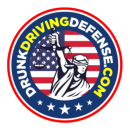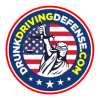| Drug Recognition Expert Overview
DRE or “Drug Recognition Expert” courses (as it is commonly called in police training) are a fast-growing area of advanced police training. When an officer sees signs of obvious impairment, he or she is asked to screen for alcohol (using a hand-held breath testing device) to eliminate alcohol as the cause.
A low or negative alcohol reading can likely mean that drugs may be the cause. Drug usage and “polydrug” cases are escalating annually all over America.
The regular “beat” cop may not have this DRE training, but can call one of the more highly trained DRE officers to screen the subject for possible drug use.
The following document was prepared by a Kansas DRE police officer for a high school presentation. This lays out the basics of DRE protocol and training. ——————————————————————————————————————— LESSON PLAN FOR CONDUCTING A UNIT OF INSTRUCTION IN WHAT IS A DRUG RECOGNITION EXPERT?PRESENTED FOR HIGH SCHOOL STUDENTS AND ADULTS PRESENTED BY DETECTIVE ROBERT L. CRITES CERTIFIED DRUG RECOGNITION EXPERT Unit Learning Goal It is the goal of this unit of instruction for attendees to know what a Drug Recognition Expert is and what one does. Unit Learning ObjectivesUpon successful completion of this unit of instruction, the audience will: 1. Know what a Drug Recognition Expert does. 2. Be familiar with how they perform the required tests and evaluations. 3. Understand the growing need in society for the skills of a Drug Recognition Expert. Unit Learning PlanA. Method of InstructionLecture B. Instruction Aids1. Classroom 2. Handouts Kansas Drug Influence Evaluation (completed) C. Method of Evaluation Classroom participation and question and answer session at unit completion. D. Student Target Population Grades 9 through adult students and teachers, Law Enforcement personnel. E. Time Allotted Minimum 2 hours Topical Outline I. IntroductionA. Introduce self and background B. Present unit goals and objectives II. Body A. How many of you have ever heard of a Drug Recognition Expert? B. How many know what they are and why there is such a person? 1. Drug Recognition Expert is also called a DRE or a DRT (technician) 2. A DRE is a Law Enforcement officer who has been trained to evaluate the DUI (Driving Under the Influence) driver that appears to be under the influence of some substance other than alcohol. The DRE certification process is a very lengthy and difficult training. Full certification is not complete for about two or three months after the two-week school, 15-proctored evaluations of drug influenced subjects, and a 20 question, 8-hour exam. 3. There are approximately 100 in the state of Kansas and about 6000 in the Nation. C. When does the DRE do his job? 1. The DRE is contacted after the breath alcohol test has been administered and shows no alcohol or an alcohol level that would be lower than the exhibited physical signs of the subject. 2. The DRE begins his evaluation process that takes a minimum of 45 minutes and ranges from the Field Sobriety Testing to many physical and medical observations. D. Categories of drugs of influence 1. Central Nervous System Depressants 2. Central Nervous System Stimulants 3. Hallucinogens 4. PCP 5. Narcotics 6. Inhalants 7. Cannabis Since we know that drugs affect the body in many ways, the Drug Evaluation process was developed to observe and compare the body’s controllable and uncontrollable reactions to the evaluations. These recorded reactions, combined with his extensive training, help the DRE in making a determination as to the category of drug the subject is being influenced by. E. The DRE begins a twelve-step evaluation process, finally completing the Influence Report form and notifying the arresting officer of the outcome. III. Twelve-Step Evaluation Process A. Breath Alcohol Screening Test 1. Standardized Field Sobriety Tests (by initiating officer) a. May indicate actions not indicative of alcohol influence 2. Preliminary Breath Testing a. May indicate low or 0.00% Blood Alcohol Content 3. Intoxilyzer Testing a. Must be tested to establish foundation for DRE evaluation b. If the subject refuses, there can be no DRE testing B. Interview with arresting officer 1. How was the subject acting at the scene a. Many drugs have short duration of affect 2. Unusual actions, statement, or contraband a. Did the subject say anything about drugs b. Were there any drugs or paraphernalia around c. Different drugs affect the body differently C. Preliminary exam of subject 1. First check of pulse 2. Angle of onset of Nystagmus 3. Initial pupil size D. Eye exam 1. Check both eyes a. Equal pupil size b. Equal tracking of pupils 2. Horizontal Gaze Nystagmus a. Smooth pursuit b. Maximum deviation c. Angle of onset 3. Vertical Gaze Nystagmus 4. Non-convergence E. Divided attention tests 1. Romberg a. Body sway b. 30 second internal clock c. Tremors 2. Nine-step Walk and Turn 3. One-leg-stand a. 30 seconds each leg 4. Finger-to-nose test F. Vital signs 1. Check pulse 2. Blood pressure 3. Body temperature G. Pupil size and ingestion exam 1. Pupil size in lighted room 2. Pupil size in total darkness 3. Pupil size in indirect light 4. Pupil size in direct light a. Rebound dilation b. Hippus 5. Check nasal cavities a. Residue from insufflated drugs b. Deviated septum 6. Check oral cavities a. Residue on tongue b. Debris from drugs c. Blisters H. Check muscle tone 1. Rigidity caused by stimulants, PCP, Hallucinogens 2. Flaccid caused by depressants, narcotics, inhalants I. Check for injection sites 1. Final pulse 2. Injection sites a. Bends and joints b. Tattooed areas J. Interrogation, statements, other observations K. Opinion by the evaluator L. Toxicology exam 1. Urine or blood specimen a. Confirms evaluators opinion
Drug Evaluation Narrative Subject: Bob BrownDate: 05-02-98 Location: Evaluation conducted at Sedgwick County Adult Detention Facility, Professional Visitation Room, Wichita, Kansas. Witnesses: Officer Robert Crites, Haysville Police Department, Evaluator. Officer Tom Chancellor, Derby Police Department, Recorder. Sgt. Ralph Duffey, Kansas Highway Patrol, Witness. Officer Ralph Stewart, Kansas City, Missouri Police Department, Instructor. Breath Alcohol Test: Officer Robert Crites obtained a .00% BAC from Brown. Notification and Interview of the Arresting Officer: At approx. 2315 hrs. I was asked to conduct a DRE evaluation on Bob Brown. Brown’s impairment was not consistent with a BAC of .00% obtained. Initial Observations of Suspect: I first observed Brown in the booking area of the jail at approx. 2315 hrs. Brown was very fidgety and nervous. Brown could not keep his hand or feet still. I noticed that Brown’s face was flushed, and he was sweating. He kept licking his lips, and shaking his head. On the way to the evaluation area, Brown took a very long drink from the water fountain. Brown responded to all questions, and was very talkative and kept moving his feet and hands. When Brown’s handcuffs were removed I noticed that his right wrist was very swollen and red. His first pulse was 98 BPM. Pupils appeared to be normal, although Brown kept blinking repeatedly. Medical Problems and Treatment: When asked if he was sick or injured. Brown stated œI’m a dope addict. In response to a question of any physical defects Brown stated, œJust the way dope ate me up. Psychophysical: Mr. Brown displayed eyelid tremors and Bruxism and swayed during the Romberg, estimating 25 seconds as 30 secs. During the Walk and Turn Brown had leg tremors and could not keep balance during Instructional Stage and missed heel to toe, raised arms, counted steps of turn, and turned incorrectly during Walking Stage. Brown was reminded to point his toe, swayed and used his arms for balance during One Leg Stand. He missed the tip of his nose on #1 and #5. Clinical Indicators: Eyes- continuous blinking. No onset. HGN, or Vertical Nystagmus. Eyes were able to converge. Pupil size was below normal in direct light showing 2.5 mm and normal in other light conditions. Vital signs- tachycardia (98, 96, 96bpm); Diastolic blood pressure above normal; temperature was normal. Signs of Ingestion: Numerous puncture wounds on both arms, bruising around puncture wounds, and a match burn on left arm, right wrist had noticeable swelling around a puncture wound (photos attached). Blisters on the back of Brown’s tongue. Suspect’s Statements: Brown stated he had been using Methamphetamine, 3-4 grams but not within the last 24 hrs. He stated he could not tell me where he took the meth, then said œfarm field. During the eye exam, Brown said, œThat’s one of the problems of being on meth. I’m subconscious about everything, I do dope. DRE’s Opinion: In my opinion, Brown is under the influence of a CNS Stimulant and Narcotic Analgesics. Toxicological Sample: Urine obtained from Brown. Witnessed by Officer Chancellor and myself. Miscellaneous: Brown drank approximately 1012 cups of water and 3-4 cups of coffee during my contact with him. Drug Evaluation Narrative
Subject: Hayes, George N. DRE: R. Crites HPDDate: 05-30-98 0014 hrs. Location: Evaluation conducted at Wichita, Kansas Police Department. Witnesses: Officer R. Baker, W.P.D., Evaluator, Officer R. Crites, H.P.D. Officer J. Queen, Derby P.D., Instructor. Breath Alcohol Test: 0.00% BAC Notification and Interview of the Arresting Officer: At approx. 0014 hrs. we were notified to perform an evaluation on the above subject. Initial Observations of Suspect: Hayes was cooperative. I did observe Hayes had bloodshot and watery eyes. Raspy speech. First pulse indicated tachycardia (94 bpm). Medical Problems and Treatment: Hayes indicated he was HIV positive, and taking several kinds of medication and under a doctor’s care. Lortab, Indinavine, Stavudine, Didanosine were the medications. Psychophysical: Romberg test indicated a normal internal clock 34/30, and a noticeable sway of 1-2. During the walk and turn, suspect came off line during instructional stage, missed heel to toe on steps 1, 3, made an improper turn and missed heel to toe on steps 1, 4, 7 and 9 on the return. Hayes also raised his arms and stepped off line. During the One Leg Stand, Hayes put his arms out for balance, swayed, hopped, and put his foot down. He did not complete the right leg test due to an injury. On the Finger to Nose Test he missed the tip of his nose on step 1,3, and 6 and had noticeable sway. Clinical Indicators: HGN indicated equal tracking with no lack of smooth pursuit, there was nystagmus at maximum deviation in the right eye, and angle of onset was at 45 degrees. There was no vertical nystagmus noted, and eyes were unable to converge. Pupils were below normal range in all conditions (2.0 mm-3.0 mm), with little or no reaction to light. Hippus was noted. Second and third pulse was at the high side of normal. Blood Pressure and temperature were both within normal limits. Signs of Ingestion: There was a brown tint on the tongue. Suspect’s Statements: Hayes stated he had several hits off a joint at approximately 2330 hrs that evening. This was in addition to the prescription medications he was taking. DRE’s Opinion: Based on my experience and Hayes’ statements, it is my opinion the suspect was experiencing the effects of cannabis, and narcotic analgesics, causing an overlap effect. Toxicological Sample: A urine specimen was obtained from Hayes and submitted for testing. Miscellaneous: Hayes was very unsteady and had ptosis. Made slow movements. |
Further Reading
For more information on field sobriety tests, take a look at one of our articles detailing specific aspects of these DUI tests below:

